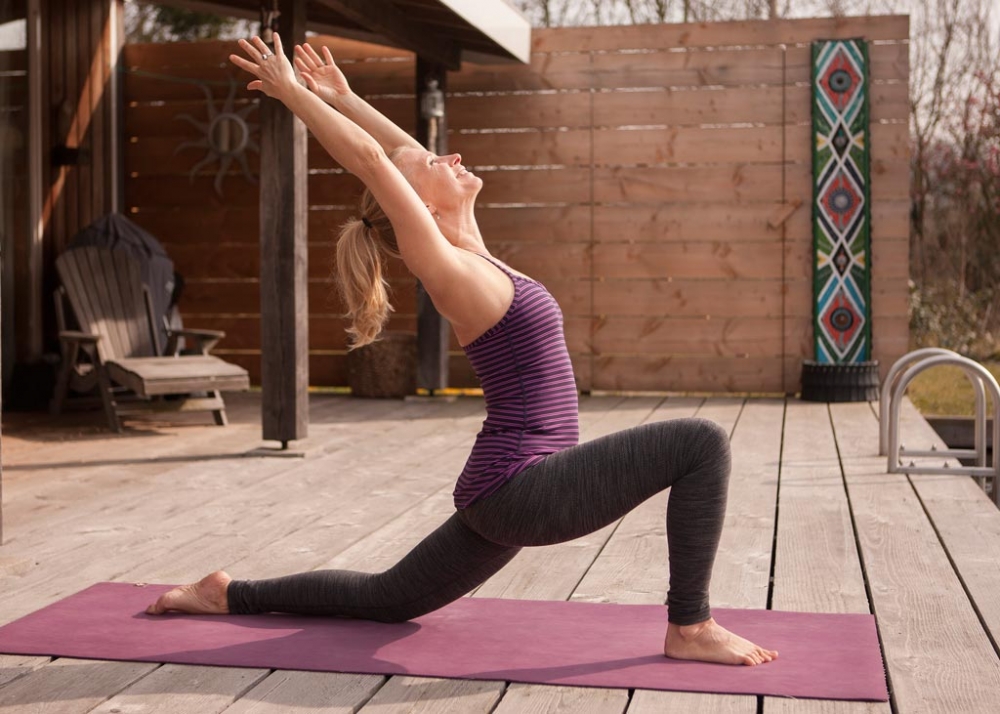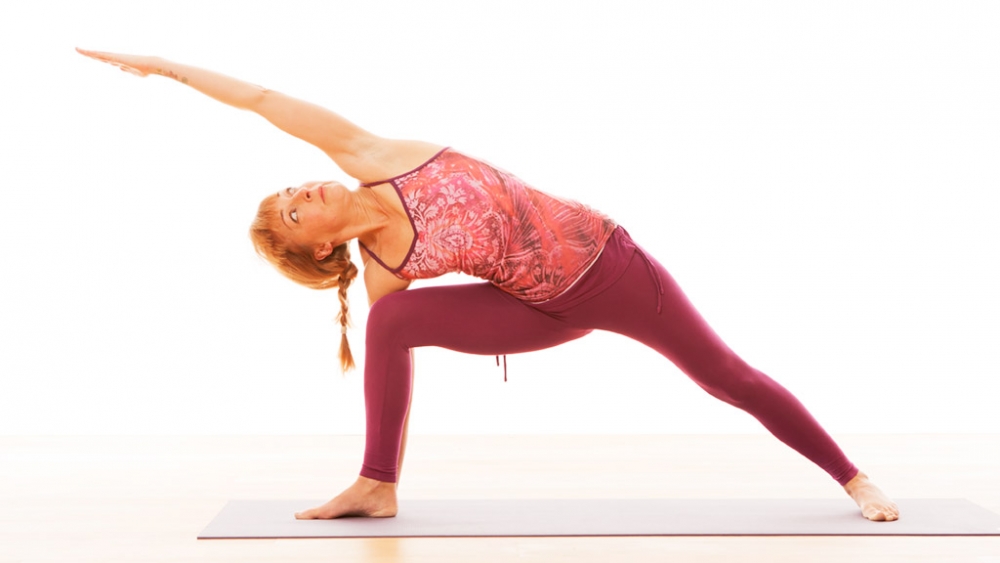What is fascia?
Fascia is a fibrous tissue that ‘connects’ every cell in our body. This connective tissue forms a 3-dimensional web of our body, extending from our head to our toes. Fascia surrounds and infuses every muscle, muscle fibre, bone, blood vessel, nerve and organ in our body. It also directly affects our body systems like our muscular and neurological systems.
“Fascia – or connective tissue, is what glues us together. So, it’s a broad use of the word fascia. What we are really talking about is the body extracellular net that holds us together” – Tom Myers
If you think of a piece of meat – like a chicken breast or beef – you can often see a white, sometimes transparent web interweaved through the tissue. This is fascia.
Still finding it hard to visualise? Think of an orange – you can segment it into pieces because each segment is divided by a clear yet strong sheet of tissue. Within these segments, the juice is further segmented – forming the pulp – by this same type of tissue. It’s exactly the same for us! We are segmented, yet intimately connected, by fascia.
The qualities of fascia
Fascia is made up of three things:
- elastic fibers – allowing for the possibility of change
- collagen fibers (which is very tough) which provides our support and strength
- and a ground substance which has a gelatinous, fluid texture (when it’s healthy). This fluid quality allows for organs and muscles to glide over each other without friction.
We have a type of fascia found just below the skin (superficial fascia), and beneath this we have deep fascia – a tougher, tighter form. Embedded in this are our muscles, blood vessels etc. A third kind of fascia lines and forms our body cavities. I see it all as one and the same, one substance that supports, stabilises and guides our body and its functions.
I worked as a massage therapist for over 10 years and learning about fascia was a eureka moment and changed the way that I viewed the body and its posture and form.
The organ of form
Fascia is the framework of our form… our organ of form. It’s a structure that organizes us into a shape that functions and moves through life. When we think and work with fascia it can be good to cultivate an idea of ‘wholeness’ and ‘connection’’, to truly appreciate its unique and often unrecognized importance.
“Fascia as a shape shifter, being responsible for the shape of our body and particularly locking us into permanent posture patterns.” – Tom Myers
The value of yoga – change your body, change your behaviour
Yoga is one example of an exercise or body practice that works on our fascial network. Psychological and physiological trauma is held by our fascia and we need to approach our fascia with patience and care.

As I mentioned above, part of our fascia is made up of ground substance. This jelly-like layer is happiest when it’s hydrated and juicy! When we have a restriction in our body, our fascia becomes dehydrated, stiff, weak and stuck. Along with hydration and other healthy lifestyle choices, Yoga (especially slow yoga like Yin Yoga), changes our connective tissue. We can promote relaxation and restore our fascial fluidity!
So if we are working on our fascia, through bodywork and diet, what will happen?
Fascia and support
Happy fascia is fluid. It’s springy and strong. When we run or walk, happy fascia will return the force we emit right back at us, making us feel lighter and softer. We will need to use less energy to do things and our muscles and body will work less and move with greater efficiency. We will discover new strength and flexibility and space.
Fascia and our joints
Our joints are supported by tendons and ligaments… this is also connective tissue. Ligaments connect our bones together and tendons attach our muscles to bones. They can get tight and rigid and if injured they can take a long time to recover because there is less blood circulation there.
To keep joints mobile and healthy we need to keep our ligaments and tendons happy. We need to slowly stretch our body to help our fascia. Ligaments and tendons will start to relax and release when given the time and space to do so, creating space, increasing strength and inspiring a deeper flexibility.
Fascia and our posture
When I was learning about fascia in massage, and how it affects our posture, my teacher once told me to imagine a sheet spread out on the floor. By picking up a part of the sheet and pulling on it, you can clearly see tension lines and folds that spread out from that point. This is how tension in our fascial grid affects us on a 3-dimensional level. A restriction in our feet can have a knock-on effect right up to our necks! Yin yoga, in particular, is great for helping to iron out these wrinkles, and helping to correct posture.
Browse our Yin yoga classes and try it out.
Form and the mind-body connection
There is no such thing as a perfect form – a body that works and moves perfectly, without restriction, pain or postural habits. Our fascia is directly affected by our daily habits, our thoughts and our emotions.
Fascia and our neurological system
I recently read a great article – an interview with Tom Myers (my fascia guru!) and it really helped me to fully realize how deeply our fascia is connected with our neurological system – how not only our postural habits and environmental factors affect our form, but our thoughts, emotions and our brain chemistry too!
Fascia (connective tissue) has been with us from the very beginning… in fact it’s our fascia that guided our form when we were a tiny embryo in our mother’s womb.
“In the development of the embryo, it’s actually the connective tissue cells that are organizing the brain. The brain cells of the neo-cortex are originally born in the ventricles in the middle of the brain. And they have to migrate out to the surface of the brain. That’s not very far in a little tiny little embryo, but it’s incredibly long, as far as the cell is concerned…So how do the cells which get born in the middle of the brain know where to go on the surface of the brain? The answer is that they put their little ‘arms’ around a connective tissue fiber and ride that connective tissue fiber out to the surface of the brain and are deposited in just the right spot.” – Tom Myers
The central part of our nervous system is our brain. This is where our thoughts are generated and where our hormones (regulates our body and mood) are created. This provides incredible insight into the importance of fascia. It shows just how intimately connected it is, not only to our physical form, but also our mental and emotional form.
Our nervous system works together with our musculoskeletal and fascial system to shape and form our posture and body.
Tension of form spiral
So taking this insight into practical terms, think of when someone is feeling low, what image comes to mind? Their head is usually lowered, their chest caved… protecting their heart. This postural pattern will start to affect their entire system, including their fascial grid. Think of what part of their fascia is becoming restricted. Their chest cavity is closing in affecting their breathing. It sends a message to the brain … something is happening that is causing the breath to change. Thus, the brain chemistry changes. It can start to release stress-inducing hormones which further affects mood and stress levels – increasing tension in the body and its form.
This spiral works in both directions… our mind interpreting tension from our body and our body reacting to our mind. It stands to reason that if we work with our bodies and if we work on releasing and realigning our fascia, it will have a direct effect on our mind, our behavior and our emotions.
Tension in any area will have a knock-on effect throughout our whole fascial grid. If you are constantly sitting at your desk, for example, you could get fascial bunching in your chest area – leading to a weakened upper back. Sitting for long periods of time can tighten your hip flexors, which can, if ignored, lead to fascial restriction of the hips. This can affect you up to your neck and down to your toes and right into your core because our fascia is all connected!
Change!
As we discovered earlier, working on our fascia will not only create space, flexibility and enable strength in our physical form, but can also help change our behavior.
“What the people who developed yoga recognized was that in order to change the person – not just to change the chemistry or to change the amount of strength that you have or your readiness to dive off a diving board – but to really change the person that you are, to change the issues in the tissues, then you really have to make a deep change in the pattern of your body.” ~ Tom Myers
Trust your body
Sit for a moment and close your eyes… feel your body as it is in this moment. Become aware of any tightness, any warmth or cold, any space or strength. What you are feeling is often in specific areas of your body… your hamstrings, or your trapezius muscle… but it’s also your fascia… which is one thing… so your fascia is – you are – experiencing this all at the same time.
Fascia has a great capacity for change while still supporting you in every way. When we are a developing embryo in our mother’s womb, it’s our fascia (connective tissue) that is the guiding hand in the development of our physical and neurological form. Trust its strength and its flexibility and allow it… and you… to change, to flow and to adapt.
To find out more about fascia, check out Tom Myers’ site Anatomy Trains
Work on your fascia with EkhartYoga
For EkhartYoga members
Deep Release Yoga program – join us for a 3-week guided yoga practice where we focus on releasing tension within the mind and the muscles and fascia/connective tissues of the body.

